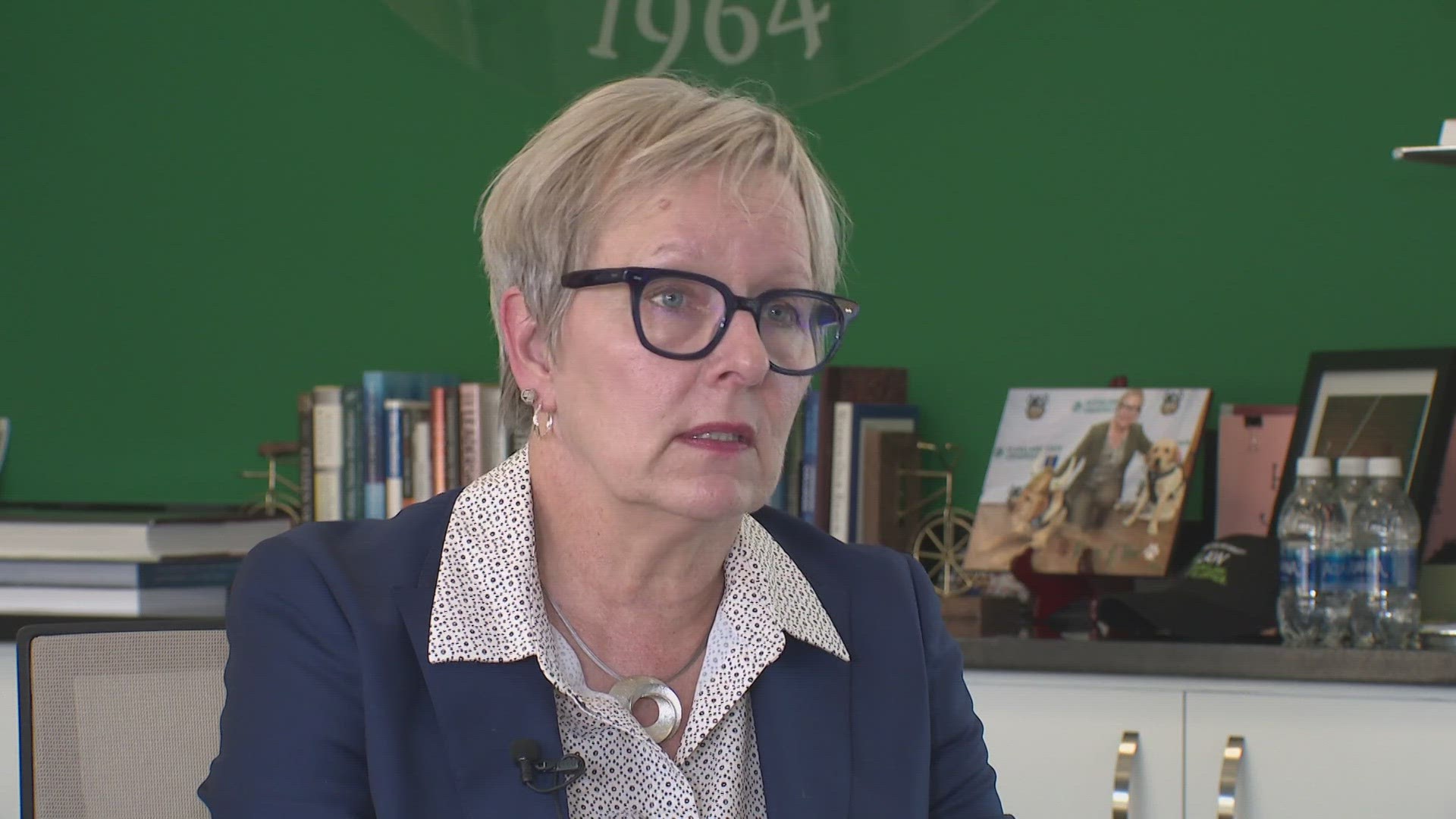CLEVELAND — Cleveland State University President Dr. Laura Bloomberg recently sat down with 3News for an exclusive interview as school leadership is in the process of addressing a $40.1 million budget deficit projected by fiscal year 2029.
"It would be silly to say this isn't a stressful time," Bloomberg told us shortly after a virtual meeting where she explained the budget crisis to members of the CSU community. "We will achieve a reduction in force because we need to."
FACULTY AND STAFF BUYOUTS
Last week, Cleveland State’s Board of Trustees approved what the university is calling "voluntary separation incentive packages" for faculty and staff with 10 or more years of consecutive employment with the university. Although specific details are being ironed out, those approved for the buyout could receive up to one year of their base salary.
"The downside, of course, is that I announced it without all of the information intact," Bloomberg said. "I'm not hiding anything. We just have to deal with figuring out what exactly the timelines will be. That will be coming in the next couple of weeks."
PROJECTED ENROLLMENT DECLINE WITH RISING COSTS
According to university projections, CSU's enrollment will drop from 14,500 to 13,400 students by fiscal year 2029, while expenses are expected to increase by more than $12 million.
"On our current trajectory, we are on track to spend $153 million to cover our losses over the next five years, and if we are to do that people, we will deplete our $147 million in reserves," Bloomberg explained to what a school representative says was a gathering of more than 500 people logged into Tuesday's meeting. "That is not a path that is sustainable; that is a path that leads to closure."
The university's steering committee has identified the following six areas to reduce expenses:
- Strategic Prioritization (Around $10.3 million): Refocus around areas of strength and make strategic decisions related to athletics, research, hospitality, facilities, and program offerings. Drive improved financial performance via changes to operations in administrative support, university leadership, and advancement.
- Optimization of student-to-faculty ratios (Around $10.1 million): Adjust faculty headcount to historical teaching efficiency by offering a separation incentive, potentially altering workload requirements, and right-sizing capacity across departments.
- Optimization of student-to-staff ratios (Around $4.5 million): Adjust staff headcount to historical student-to-staff efficiency for individual contributors and administrative support across business units.
- Overhead reduction (Around $4.1 million): Pare back overhead costs by bringing leadership and management layers in line with historical efficiency.
- Centralization of functions (Around $2.5 million): Realize efficiency gains and headcount reductions from centralizing IT and fiscal officer functions.
- Non-headcount expense reduction (Around $2.1 million): Reduce variable non-headcount expenses across business units and optimize vendor expenditures (e.g., technology spend).
Watch our full 27-minute conversation with Dr. Bloomberg in the video below:
IMPACT ON ATHLETICS
Bloomberg has assured their Division 1 athletic program will remain at Cleveland State, but admits there will be reductions.
"I don't know exactly what those would be," she said. "I would not say for sure that means elimination of a particular sport. I can't say that for sure, but I also cannot rule that out. They will feel these reductions."
Most recently, CSU disbanded its baseball program after the 2011 season.
NOT GIVING UP ON A GROWTH MINDSET
Bloomberg, who was appointed as the eighth president of CSU in the spring of 2022, says that although she's not happy with the expected enrollment decline, the projections give a level of comfort, because now leadership knows what they're facing as they work to keep the university as the the region’s "public, urban-serving, research active institution."
"Sometimes people say, 'Does that mean you're giving up on a growth mindset?' The answer is absolutely not," Bloomberg declared. "But hope is not a strategy. We will manage to our projections, and then in the happy circumstances that we grow again …. we will then grow accordingly — our base, our faculty, and staff.”
Bloomberg says she took a 10% pay cut this year, and asked members of her senior leadership to take a 3% temporary cut in salary to address the budget deficit.
"That is not going to fix our budget gap," Bloomberg added, "but I do believe that the message has to start from the top, and it seemed only appropriate for me to lead by saying, 'I will reduce my salary right now.'"
WKYC submitted a public records request to Cleveland State for the employment contracts for Bloomberg and her cabinet to verify salaries. The documents had not been provided, as of Tuesday. However, The Buckeye Institute — an independent research and educational institution — listed Bloomberg's 2022 salary as $445,549.52.
CSU still plans to invest in technology and advising to help increase revenue.
"We can do better with our technology," Bloomberg said. "By rightsizing, we'll be able to invest in some of those areas, so there's all kinds of reasons why I don't in any way think that what we are doing right now compromises the value of an education that a student would get here."

